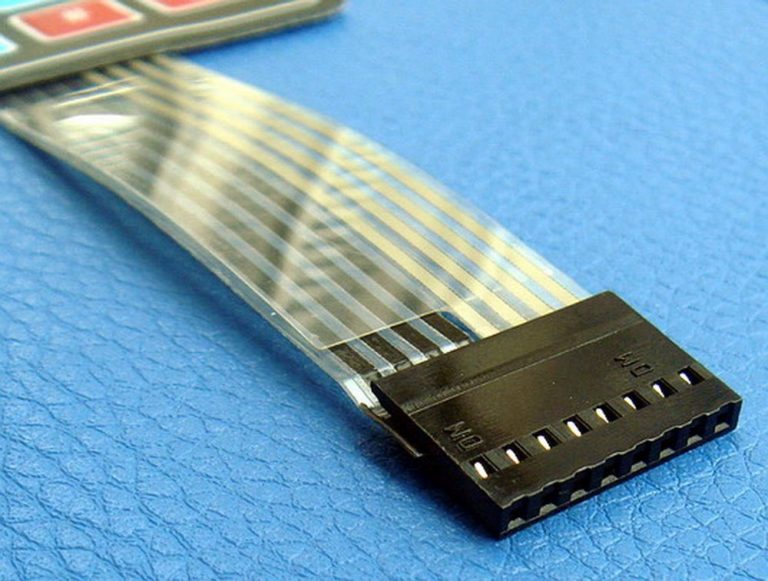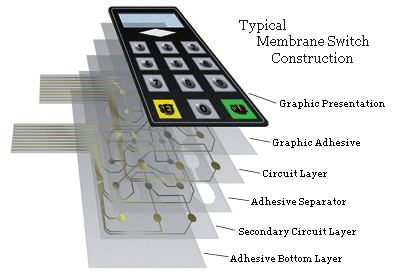Top manufacturers often rely on a skilled membrane switch manufacturer to deliver high-quality results.
Top manufacturers often rely on a skilled membrane switch manufacturer to deliver high-quality results.
Blog Article
All Concerning Membrane Switch Over: Understanding Its Style and Functionality
When you think regarding the control interfaces in contemporary tools, membrane layer buttons often come to mind. Allow's discover what sets membrane layer switches apart from other control systems.
What Are Membrane Layer Switches?

Membrane buttons can additionally be personalized pertaining to form, size, and graphics, allowing manufacturers to develop unique interfaces customized to certain products. Generally, membrane layer buttons play a substantial role in improving individual experience throughout a vast variety of applications.
Exactly How Membrane Layer Changes Work
When you press a trick on a membrane button, it triggers a simple yet reliable device. The top layer, typically made from versatile material, presses down onto a conductive layer beneath it. This activity bridges the gap in between conductive traces, completing an electrical circuit. As quickly as the circuit shuts, it sends out a signal to the gadget's controller, which interprets your input.
You'll see that the tactile responses differs based on the button layout, supplying either a soft click or an extra pronounced reaction. As soon as you release the trick, the membrane returns to its initial position, reopening the circuit and quiting the signal. This procedure happens practically instantaneously, ensuring a responsive user experience.
Membrane layer buttons are preferred due to their toughness and resistance to dust and moisture, making them ideal for numerous applications, from family home appliances to medical gadgets. Comprehending this procedure helps you value their extensive usage.
Key Parts of Membrane Buttons
Comprehending the essential components of membrane layer buttons is fundamental for understanding their performance and style. The safety layer shields versus environmental aspects and put on, extending the switch's life expectancy. By understanding these parts, you'll get insight into how membrane switches operate and their relevance in numerous applications.
Materials Made Use Of in Membrane Layer Change Design
The performance and longevity of membrane layer changes heavily depend upon the materials made use of in their design. You typically experience polyester and polycarbonate as key substratums due to their outstanding toughness and versatility. These products withstand scrapes and chemicals, making them suitable for requiring settings.
The conductive layers typically use silver or carbon, chosen for their dependability and conductivity. membrane switch manufacturer. Silver supplies remarkable performance, while carbon is a cost-effective option. For the overlay, you could think about a matte or shiny surface, depending on your aesthetic requirements and user experience
Adhesives play a crucial function too; they bond layers firmly and guarantee longevity. Make certain to choose adhesives that hold up against environmental factors like temperature and humidity. Ultimately, do not ignore the importance of a good printing technique for graphics, as it enhances both performance and aesthetic allure. Choosing the my review here ideal materials will assure your membrane button stands the test of time.
Style Considerations for Membrane Layer Switches
While developing membrane buttons, it's crucial to consider numerous aspects that affect their capability and customer experience. Start by concentrating on the format and button size; make sure they're user-friendly and simple to navigate. Take into consideration the responsive responses you intend to offer-- will individuals require a noticeable click or a softer touch? Additionally, think of the materials you'll make use of, as they'll influence toughness and appearances.
Verify your style accommodates environmental variables, like dampness or temperature level variants, which can affect performance. By meticulously considering these elements, you'll produce a membrane button that improves functionality and complete satisfaction.
Applications of Membrane Layer Buttons
Membrane layer buttons are versatile components located in different applications, from industrial equipment to consumer electronics. You'll see their influence in equipments that call for durable user interfaces and in devices that benefit from sleek designs. Understanding these applications assists you value the capability and functionality of membrane switches in daily modern technology.
Industrial Equipment Usage
When you're looking to improve the capability of commercial equipment, membrane buttons offer a reputable option that incorporates durability with straightforward design. These switches are excellent for extreme atmospheres, giving resistance to dirt, wetness, and chemicals. Accept membrane layer switches to streamline your procedures and boost overall performance.
Consumer Electronic Devices Assimilation
In the domain name of customer electronic devices, membrane switches play an essential role in enhancing customer communication and gadget functionality. Membrane layer buttons additionally guarantee resilience and resistance to dust and moisture, expanding the life expectancy of your electronic devices. By picking membrane layer buttons, you boost not just the capability but additionally the style of your devices, making day-to-day interactions smooth important link and enjoyable.
Benefits and Downsides of Membrane Layer Switches
While membrane switches use a series of advantages, they likewise come with some drawbacks that you should consider. One substantial benefit is their portable style, making them excellent for space-constrained applications. They're likewise economical, providing a resilient remedy with a low production cost. Additionally, their seamless surface area is simple to tidy, enhancing health in environments like health centers.

Membrane buttons can have a much shorter lifespan compared to mechanical switches, especially under hefty usage. They can also be much less tactile, which might affect user comments during operation. Stabilizing these pros and cons will assist you establish if membrane layer buttons are the ideal fit for your job.
Frequently Asked Inquiries
The Length Of Time Do Membrane Switches Commonly Last?
Membrane switches over usually last between 5 to one decade, depending upon use and environmental problems. You'll intend to assess aspects like wear, direct exposure to moisture, and temperature variations to gauge their durability effectively.
Can Membrane Layer Switches Be Personalized for Details Styles?
Yes, you can tailor membrane buttons to look at here fit specific styles (membrane switch manufacturer). You'll have the freedom to select shades, shapes, and layouts that match your job's needs, ensuring they mix effortlessly with your general visual
What Is the Price Variety for Membrane Switch Over Production?
The cost variety for membrane layer button manufacturing generally falls in between $1 and $10 per unit, depending on elements like design complexity, quantity, and products. You can obtain quotes from suppliers to locate the very best alternative.

Are Membrane Switches Over Water Resistant or Resistant?
Membrane layer buttons can be developed to be water resistant or immune, depending on products utilized and construction techniques. If you require them for wet environments, guarantee you define those requirements during the style process.
Exactly How Do Membrane Switches Over Compare to Traditional Switches?
Membrane buttons are typically thinner and more flexible than traditional switches, offering a sleek design. They're frequently less complicated to cleanse and integrate, but may not supply the responsive comments you're used to with mechanical alternatives.
Final thought

Report this page